Guide By – Mesothelioma Lawyer
 Mesothelioma is a rare, aggressive, and deadly form of asbestos-related cancer that develops in the mesothelial cells. Cherepinskiy Law Firm, as a mesothelioma lawyer, is committed to providing you with relevant information about mesothelioma and other asbestos-related diseases and the ways you and your family may receive compensation if you are diagnosed with an asbestos-related disease.
Mesothelioma is a rare, aggressive, and deadly form of asbestos-related cancer that develops in the mesothelial cells. Cherepinskiy Law Firm, as a mesothelioma lawyer, is committed to providing you with relevant information about mesothelioma and other asbestos-related diseases and the ways you and your family may receive compensation if you are diagnosed with an asbestos-related disease.
Only roughly 3,000 individuals a year are diagnosed with mesothelioma in the United States. It is a dangerous type of cancer that attacks the membranous lining of many of your internal organs. Mesothelioma is directly linked to exposure to asbestos, a known carcinogen. Although mesothelioma treatments are available, the general prognosis is poor for the disease in all its forms, and a cure is not possible. This firm will fight for you and hold the reckless companies who knowingly sold deadly asbestos-containing products responsible.
Mesothelioma Statistics
Based on the statistical data from American Cancer Society (“ACS”):
- In the U.S., every year, approximately 3,000 individuals receive the diagnosis of mesothelioma.
- Mesothelioma is more prevalent in men than women.
- On average, for pleural mesothelioma (the most commonly diagnosed type of this cancer), patients are 72-years-old at the time of diagnosis.
Types of Mesothelioma
There are four types of mesothelioma: pericardial, peritoneal, pleural and testicular.
Pleural Mesothelioma
Pleural mesothelioma represents the most frequently encountered and diagnosed type of mesothelioma. Among all mesothelioma diagnoses made every year, it accounts for approximately 75 percent. Pleural mesothelioma represents a specific type of cancer, which develops in the mesothelial lining of the lungs – pleura.
Peritoneal Mesothelioma
Among the most frequently-encountered types of mesothelioma, peritoneal mesothelioma is the second most frequent. Every year, among all patients diagnosed with mesothelioma, the diagnosis of peritoneal mesothelioma is made in approximately one fifth (20%) of cases. This type of mesothelioma originates in the peritoneum (the mesothelial lining of the abdomen).
Pericardial Mesothelioma
One of the rarest forms of mesothelioma is pericardial mesothelioma. Each year, the diagnosis of pericardial mesothelioma is made in roughly one in a hundred (1%) of new mesothelioma cases. This type of cancer develops on the outer lining of the heart. Specifically, pericardial mesothelioma develops in the membrane surrounding the heart, which is called “pericardium.” Typically, it occurs in a person’s 50s-70s, and strikes almost twice as many men as women.
Testicular Mesothelioma
With the incidence of less than 1% among all diagnoses of mesothelioma, testicular mesothelioma also represents one of the rarest types of this cancer. It attacks the membranes surrounding the testicles (also known as “tunica vaginalis testis”).
Causes of Mesothelioma
The overwhelming cause of mesothelioma is exposure to asbestos – one of several naturally-occurring mineral substances with fire-resistant properties. A dangerous asbestos exposure can result from very small fibers at low exposure levels. Mesothelioma is a dose-dependent disease – each and every exposure to asbestos contributes to a person’s risk of contracting this fatal disease. The latency period between first exposure and clinically-detectible disease can exceed 50 years.
Exposure to asbestos occurs in an occupation environment, working near others who work with asbestos-containing products, living in older residential buildings, living in proximity to an asbestos mine, using asbestos-containing products for personal hygiene (e.g., talc), and exposure from family members through their work clothes or other close contacts. Mesothelioma occurs more often in men than in women and risk increases with age, but this terrible disease can appear in either men or women at any age.
Because asbestos fibers are very small, millions of fibers could fill the air in a room without anyone being able to perceive it with the naked eye. The fibers are also odorless, cannot be seen with the naked eye, and are aerodynamic. Therefore, someone can inhale asbestos fibers without even being aware of it. The fibers are also small enough to pass through the normal respiratory defense mechanisms that the human body uses to keep out toxins and debris.
Each time a person inhales asbestos dust, fibers make their way to the lungs’ pleura (or other areas) which are comprised of mesothelial cells, the target cells for mesothelioma. Once asbestos fibers enter the pleura (or other areas) they remain in the body for many years, if not permanently. Asbestos causes mesothelioma by mutating the mesothelial DNA responsible for cellular division. When a sufficient number of genetic errors have accumulated in a single mesothelial cell due to asbestos interference, it becomes cancerous.
The majority of people diagnosed with mesothelioma could have been saved from this terrible disease because as early as in the 1930s, it was known that asbestos was extremely dangerous and potentially deadly. However, companies manufacturing and selling asbestos-containing products were only concerned with their profits and not with people.
Symptoms of Mesothelioma
Mesothelioma is a latency disease; thus, symptoms usually appear years after the first exposure to asbestos. Unfortunately, many mesothelioma symptoms are similar to symptoms of less serious illnesses, which sometimes delays diagnosis of mesothelioma. Symptoms vary depending on the type of mesothelioma.
Symptoms of Pleural Mesothelioma
Symptoms of pleural mesothelioma often include:
- shortness of breath
- chest pain
- lower back pain
- dry coughing
- wheezing
- coughing up blood
- hoarseness
- difficulty swallowing
- fatigue
- weight loss
- fever
In severe cases, pleural mesothelioma may cause a lung to collapse. This condition is called “pneumothorax”, and it arises when the space between a patient’s chest wall and lung develops an air leak.
Symptoms of Peritoneal Mesothelioma
Symptoms of peritoneal mesothelioma often include:
- abdominal pain
- abdominal swelling
- a mass in the abdomen
- change in bowel habits
- nausea
- vomiting
- bowel obstructions
- fatigue
- weight loss
- anemia
- fever
- elevated white blood count
Symptoms of Pericardial Mesothelioma
Symptoms of pericardial mesothelioma often include:
- heart palpitations
- chest pain
- heart murmur
- difficulty breathing
- fluid that surrounds the heart
- cough
- fatigue
Symptoms of Testicular Mesothelioma
Symptoms of testicular mesothelioma often include:
- the appearance of testicular lumps
- swelling of the scrotum
- fatigue
Diagnosis of Mesothelioma
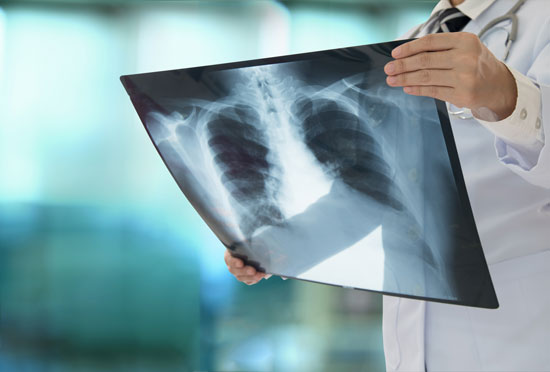 It is very important to begin looking for a mesothelioma specialist as soon as you suspect you might have mesothelioma, especially if you know you have a history of asbestos exposure. It can be difficult to diagnose mesothelioma, because many symptoms are very similar to other less serious diseases. As soon as mesothelioma symptoms start to appear, you should consult your primary care physician to discuss those symptoms. At that point, your primary doctor will probably have you undergo some preliminary tests, will ask you questions about your medical history and your exposure to asbestos. Your provider will usually also examine you to look for signs of other health problems.
It is very important to begin looking for a mesothelioma specialist as soon as you suspect you might have mesothelioma, especially if you know you have a history of asbestos exposure. It can be difficult to diagnose mesothelioma, because many symptoms are very similar to other less serious diseases. As soon as mesothelioma symptoms start to appear, you should consult your primary care physician to discuss those symptoms. At that point, your primary doctor will probably have you undergo some preliminary tests, will ask you questions about your medical history and your exposure to asbestos. Your provider will usually also examine you to look for signs of other health problems.
Pleural mesothelioma may result in a pleural effusion – the build-up of fluid inside a person’s chest between the membranes lining the lungs (pleura). Peritoneal mesothelioma can cause fluid to build up in the abdomen, which is called ascites. In cases of pericardial mesothelioma, patients can develop a pericardial effusion – an excessive amount of fluid that builds up between a patient’s heart and the pericardium (the sac around the heart). Infrequently, mesothelioma can develop in the groin and look like a hernia. These findings may be revealed during a physical examination – when a physician either listens to these areas with a stethoscope or taps on your chest or belly.
If mesothelioma is suspected after the preliminary testing, you will be referred to a specialist. There are a number of tests to isolate mesothelioma. These tests include the following: imaging studies (X-rays, CT Scans, MRI, PET Scans, echocardiograms), blood work, needle biopsy, various types of endoscopic biopsies, microscopic analysis, and even invasive procedures such as an open surgical biopsy through thoracotomy and laparotomy. These are the details pertaining to the specific diagnostic tests:
Imaging Studies
Imaging studies use a variety of technologies to visualize the internal organs and structures. These technologies include high-energy electromagnetic waves and radioactive particles (X-rays, CT scans, PET scans), sound waves (Ultrasound studies), or magnetic fields (MRIs). There are multiple potential reasons for performing imaging studies. These reasons include, but are not limited to, the following: visualizing suspicious areas that might be cancer, evaluating whether the cancer has spread (metastasized) to other organs and the extent of the spread, determining if a treatment is effective, and looking for any signs of cancer recurrence (the return of cancer after treatment).
X-ray
Chest X-ray is often the first test done to determine problems in the lungs. The following findings can potentially be signs of mesothelioma: changes in the lungs themselves or calcium deposits, thickening, or excess fluid involving pleura (lung membranes).
CT Scan
CT scan, or computed tomography scan, uses x-rays to make detailed cross-sectional images of your body. These scans are used to help look for mesothelioma and to determine the exact location of this cancer. They also help determine the stage of mesothelioma. Specifically, they often show if the mesothelioma has spread to other organs. This determination helps decide whether surgery might be an option. If a patient is receiving chemotherapy, CT scan can be used to show if it is shrinking or slowing the growth of cancer.
MRI
MRI scan, or magnetic resonance imaging scan, shows detailed images of the soft tissues in the body. MRI scans use radio waves and strong magnets instead of x-rays. To better show details, a contrast material called gadolinium is often injected into a vein before the scan is performed. MRI scans can help show the exact location and extent of a tumor, because they provide very detailed images of soft tissues.
PET Scan
PET scans, or positron emission tomography scans, usually use a radioactive sugar that is put into the blood. For PET scans, the amount of radioactivity used is very low. Since cancer cells grow quickly, they absorb more of the sugar than most other cells. A special camera then creates images of areas of radioactivity in the body. These images can assist your treating physician with evaluating the following issue: whether a thickening of the peritoneum or pleura (as shown by the CT imaging) represents benign scar tissue or actual cancer.
Further, physicians who treat mesothelioma patients may utilize PET scans in order to determine if the cancer has spread (metastasized) to lymph nodes or other parts of the body. If your doctor thinks the cancer may have spread but does not know where, a PET scan can also be used to determine that. There are some machines that can do both a PET and CT scan at the same time. This allows the doctor compare areas of higher radioactivity on the PET scan with the more detailed picture of that area on the CT scan.
Echocardiogram
If your doctor suspects you have fluid around your heart, echocardiogram can be done. Echocardiogram is an ultrasound of the heart. This test also shows how well your heart is working.
Blood Tests
Blood tests are often used, because in people with mesothelioma – blood levels of certain substances are higher: fibulin-3 and soluble mesothelin-related peptides (SMRPs). Although mesothelioma cannot be diagnosed with these blood tests alone, high levels of these substances can make the diagnosis more likely. Other blood tests are performed to determine your overall health and how well other organs are working.
Needle Biopsy
A biopsy is the only way to determine with certainty whether you have mesothelioma. Additionally, needle biopsy is a procedure that is performed in order to obtain lymph node samples from the area between the lungs in order to determine if the cancer has metastasized (spread) into that space.
In a biopsy, a small portion of tissue is removed from the area suspected of disease and is examined in a lab. There are different options for performing a biopsy. If a part of your body has a potentially mesothelioma-caused fluid build-up, a fluid sample can be obtained and analyzed. In order to take this fluid sample, a needle is passed through the skin. Before the needle is put in, the skin is numbed. Sometimes the needle is guided via ultrasound.
Depending on where the fluid is, the needle biopsy procedure may have different names:
- thoracentesis – removes fluid from the chest,
- paracentesis – removes fluid from the belly, or
- pericardiocentesis – removes fluid from the sac around the heart.
The fluid then gets tested and looked at with a microscope to see whether it contains cancer cells. If cancer cells are found, special tests might be performed to determine if the cancer is a mesothelioma. However, even if no cancer cells are found in the fluid, a person might still have cancer. Often a provider needs to get an actual sample of the mesothelium to know if one has mesothelioma.
If a needle biopsy is performed, tiny pieces of tumors in the chest or abdominal are taken. For a chest biopsy, a long needle is inserted into the pleura. This needle is hollow inside and has a small diameter. On the way to the pleura, the needle passes through the chest skin and the rib cage. Imaging modalities (e.g. CT scans) are frequently utilized in order to guide the needle into the tumor, so that small samples can be taken out.
It is common to perform needle biopsies with local anesthesia (i.e. with a medicine that numbs the affected area). These biopsies do not require a surgical cut. The downside is that, sometimes, the sample taken out is not big enough to make an accurate diagnosis. At that point, a more invasive biopsy method is needed.
Endoscopic Biopsy
Endoscopic biopsy is a testing modality, which is frequently utilized in diagnosing mesothelioma. An endoscope is a type of medical instrument, which is utilized to visualize some internal organs. This instrument looks like a tube, and it has a small diameter. An endoscope has a light and a lens (or a little video camera) on the end that allows your provider to look inside your body. The specific body part, which is visualized through an endoscope, determines the unique name of the endoscope used for that purpose. Specific types of endoscopic diagnostic tests are as follows:
Thoracoscopy
Thoracoscopy is a procedure that utilizes an endoscope entitled a “thoracoscope” to look inside the chest. It is used to look at the pleura and take tissue samples for biopsies. This procedure is done in an operating room under general anesthesia. The thoracoscope is slipped through one or more small cuts made on your chest to look at the space between your lungs and the chest wall. The provider then sees possible areas of cancer and takes out small pieces of tissue for testing. Lymph nodes and fluid can also be taken out.
Laparoscopy
If a provider needs to look inside your stomach, an endoscope called a “laparoscope” is used. This procedure is called laparoscopy. This biopsy is also done in the operating room under general anesthesia. Small cuts are done on the front of the belly, and a laparoscope is put into your abdomen.
Mediastinoscopy
The area between lungs is called mediastinum. If a doctor needs to look at that area with an endoscope, the procedure is called mediastinoscopy. The type of an endoscope used for this procedure is called a “mediastinoscope”. This procedure is usually performed if imaging tests suggest that the cancer might have spread to the lymph nodes between the lungs. It is done in an operating room under general anesthesia.
Endobronchial Ultrasound Needle Biopsy
Another possible biopsy is an endobronchial ultrasound needle biopsy. A “bronchoscope” (a long, thin, flexible, fiber-optic tube) with an ultrasound device at its tip is passed down the throat and into the windpipe. This ultrasound allows the physician to visualize lymph nodes located in that region. In order to obtain biopsy samples, a needle which is hollow inside is inserted into the bronchoscope. This needle then passes through the wall of the airway and into the lymph nodes, which enables the operator to take biopsy samples. This biopsy may be done with either general anesthesia or local anesthesia.
Peritoneoscopy
If a physician needs to remove and /or test some tissue from a patient’s abdomen, a peritoneoscopy is performed. This procedure is performed with a special kind of an endoscope entitled a “peritoneoscope”. An incision is made in the wall of the patient’s abdomen, and this instrument is inserted into the abdominal area. This enables the physician to examine and remove any tissue that appears suspicious.
Open Surgical Biopsy
At times, more invasive procedures are required when endoscopic biopsies are not enough to make the diagnosis. At that point, a surgeon needs to make an incision in the chest or in the abdomen to remove a larger sample of tumor or the entire tumor.
- Thoracotomy – in this procedure, a surgeon opens the chest between the ribs to look for signs of disease.
- Laparotomy – is when a surgeon opens the abdomen to look for signs of disease.
Microscopic Analysis
When obtained, biopsy and fluid samples are sent to a pathology lab to be looked at under a microscope. They are tested and it is determined whether you have cancer and what type of cancer. However, when mesothelioma is visualized using a microscope, it frequently has the appearance of other cancer types. Therefore, certain special lab tests are done to help determine what kind of mesothelioma you specifically have.
Progression of Mesothelioma
According to the National Cancer Institute, there are four main stages of mesothelioma. The stage of mesothelioma shows how far it is spread from where it originally appeared – lining of the lungs, abdomen, or heart. The farther mesothelioma has spread, the more advance the stage is.
Pleural mesothelioma (the type of mesothelioma that is diagnosed most frequently) is the only mesothelioma that has a formal staging system. The system, which is utilized to stage this specific type of mesothelioma is entitled the “TNM” system. It was developed by the American Joint Committee on Cancer (“AJCC”). This staging system is based on 3 key pieces of information: (1) the extent of the main tumor (T), (2) the spread to nearby lymph nodes (N), and (3) the spread to distant sites (M). Once a person’s T, N, and M categories have been determined, this information is combined in a process called stage grouping to assign an overall stage. The medical aspects of mesothelioma cases are very complex, and you need the knowledge and skills of the mesothelioma lawyer who is experienced in handling such cases.
Treatment of Mesothelioma
Surgery
There are two categories of surgical treatment options for mesothelioma patients – diagnostic surgery and palliative surgery. If your mesothelioma is localized, the more aggressive surgeries might be your options: for example, pleurectomy (removal of as much of the tumor from around the lungs as possible) or extrapleural pneumonectomy (removal of the lung).
Chemotherapy
Chemotherapy can be used on its own or prior to or after surgery. Chemotherapy maybe be induced orally or through an IV (intravenously). The purpose of chemotherapy is to kill cancer cells. Unfortunately, chemotherapy often results in unpleasant side effects.
Radiation
Radiation is used to help shrink tumors. Often radiation for mesothelioma patients is used together with chemotherapy and surgery. Pleural mesothelioma is better treated with radiation than peritoneal mesothelioma. The main two types of radiation to treat pleural mesothelioma are external beam radiation and intraoperative radiation.
Immunotherapy
Immunotherapy is an emerging treatment option for mesothelioma. It is mostly available to patients through clinical trials. When combined with surgery and chemotherapy, immunotherapy has been effective in alleviating symptoms and improving survival rates. This type of treatment is still being studied. Common immunotherapies, which are either currently in use or being analyzed and studied, include:
- cancer vaccines
- immune checkpoint inhibitors
- monoclonal antibodies
- adoptive cell transfers
- cytokines
Clinical Trials
Clinical trials are experimental studies conducted with groups of patient volunteers. The goal of these studies is to determine if the new procedure or treatment is safe and effective for humans. Different settings are offered for different clinical trials. Not every mesothelioma patient may be eligible to participate in a particular clinical trial.
Palliative Care
In patients with advanced mesothelioma or elderly patients whose bodies are not strong enough to undergo aggressive treatment – palliative care is often the only available option. The purpose of palliative care is to alleviate pain, which is caused by the disease process itself as well as the symptoms that accompany it. In addition, procedures that are palliative in nature may be utilized to slow the cancer’s growth and improve a patient’s quality of life.
Prognosis for Mesothelioma Patients
Since every case of mesothelioma is different, there are many factors that determine a mesothelioma patient’s prognosis. These factors include the location of mesothelioma and the type of mesothelioma. Doctors also look at the cell type. There are three cell types:
- epithelial,
- sarcomatoid, and
- biphasic.
A “survival rate” for a specific time period defines the percentage of patients who will live for at least the duration of that period (e.g. 2 years or 5 years) after the diagnosis of cancer is made. Based on the statistical analysis from the American Cancer Society (“ACS”), the following are approximate estimated survival rates of mesothelioma:
2-Year Survival
- If the diagnosis of mesothelioma is made early (when the cancer is still local and has not spread to lymph nodes or other areas), approximately 41 to 46 percent of patients survive for at least 2 years after the diagnosis.
- For Stages II & III – i.e. if mesothelioma has spread (metastasized) to lymph nodes or other nearby tissue or organs, the 2-year survival rate goes down to approximately 26 to 38 percent.
- If mesothelioma has metastasized (spread) to distant areas of the body, approximately 17 percent of patients survive for at least 2 years after the diagnosis.
5-Year Survival
- If the diagnosis is made early (when the cancer is still local), approximately 13 to 16 percent of patients survive for at least 5 years after the diagnosis.
- For Stages II & III – i.e. if mesothelioma has spread (metastasized) to lymph nodes or other nearby tissue or organs, the 5-year survival rate is reduced to approximately 5 to 10 percent.
- If mesothelioma has metastasized (spread) to distant areas of the body, less than 1 percent of patients survive for at least 5 years after the diagnosis.
- Overall, only approximately 10 percent of mesothelioma patients survive for 5 years after the cancer is found. This is because, typically, this type of cancer is diagnosed when it is already at an advanced stage.
- In general, the post-diagnosis survival period is longer for those people who are diagnosed when they are younger. The rates of survival are also affected by the specific kind of mesothelioma. For example, peritoneal mesothelioma can be a slow-growing cancer. Patients with this type of mesothelioma tend to live longer after the diagnosis is made.
In addition, the stage of the disease certainly plays a big role in the length of survival. Those patients who are surgical candidates (i.e. where the cancer can still be surgically removed) have higher overall survival rates than those patients who cannot undergo a surgery because the metastatic process is too advanced. Unfortunately, most patients are diagnosed with mesothelioma at advanced stages of the disease, which makes the treatment very difficult and the prognosis poor.
Doctors consider the presence of metastases in determining prognosis for mesothelioma patients. Metastasis refers to how much the cancer has spread beyond its original location. Often, by the time a mesothelioma patient is diagnosed, mesothelioma already spread to other parts of the body. This makes mesothelioma more difficult to treat. As with every disease, doctors also consider the age of a mesothelioma patient and absence or presence of other health problems.
The American Thoracic Society considers malignant mesothelioma to be a fatal disease. The overall average life expectancy of a mesothelioma patient is short (between 4 and 18 months after diagnosis). Most mesothelioma patients never go into remission. There is currently no known cure for mesothelioma. However, many patients feel some relief from symptoms due to medical treatments and, sometimes, alternative treatments.
Mental Effects of Mesothelioma
A mesothelioma diagnosis affects people not only physically but also mentally and emotionally. Mental health is severely disturbed when you learn that your life might get cut short by cancer. It is always important to reach out for emotional support. You should also try to educate yourself to know how to recognize signs of chemo brain. Another important tip is to avoid social isolation as much as possible.
Often people diagnosed with mesothelioma experience a range of feelings such as fear, sadness, anger, confusion, stress and anxiety. To help cope, you should build a support system of family, friends and health care professionals. There are also a number of cancer support groups. Counselors are often available at cancer treatment centers to help you work through the challenges posed by mesothelioma.
Chemotherapy can affect cognitive function. This could be temporary or could last for a long time after the therapy. The effects are referred to as “chemo brain” and may include: challenges with multitasking, slow or foggy thought processing, difficulty remembering names, dates and words. To help reduce these affects, there are cognitive training tools that you can use.
Because mesothelioma is a rare cancer, often, patients diagnosed with this disease feel like they are alone. This happens because it is unlikely that they know a lot, or any, people with the same diagnosis. As a result, mesothelioma patients sometimes think that nobody understands them. It is important not to isolate yourself but, instead, join a mesothelioma support group and reach out to friends and family. Also, when you are looking for a mesothelioma lawyer, in addition to experience and credentials, the attorney you need to retain has to be caring and compassionate.
Individuals Affected by Mesothelioma
Asbestos Exposure in the Workplace
Many people were exposed to asbestos at their jobs. This is called occupational exposure. Throughout the twentieth century, asbestos was a very common substance used in American manufacturing and industrialization. Many companies ignored numerous scientific and medical warnings concerning exposure to asbestos. Therefore, many workers breathed in asbestos dust for years without knowing it.
Although it is impossible to know every single occupation that exposed people to asbestos, here are some of the most common professions where individuals were exposed:
- asbestos workers
- aircraft mechanics
- auto mechanics
- boilermakers
- bricklayers
- building inspectors
- carpenters
- chemical and petroleum workers
- coal miners
- construction workers
- electricians
- engineers
- firefighters
- insulators
- iron workers
- laborers
- locomotive repairmen
- longshoremen
- machinists
- maintenance workers
- masons
- merchant marines
- millwrights
- HVAC (heating, ventilation, and air conditioning) technicians
- oil refinery workers
- painters
- paper mill workers
- phone company workers
- pipefitters
- plasters and drywall finishers
- plumbers
- police officers
- power plant workers
- railroad workers
- roofers
- shipbuilders
- shipyard workers
- ship scrappers
- steel workers
- tile setters
- veterans
- Air Force veterans
- Army veterans
- Coast Guard veterans
- Marine Corps veterans
- Navy veterans
- War Veterans (Vietnam and Iraq)
- welders.
As a mesothelioma attorney, Cherepinskiy Law Firm will carefully investigate and analyze the facts and circumstances of your asbestos exposure in light of the requirements necessary to prevail on a claim.
Second Hand Asbestos Exposure
There is also a risk of developing mesothelioma to the family members of those working in at-risk occupations; this exposure is called paraoccupational exposure. These people are at considerable risk for developing mesothelioma. In fact, secondary exposure to asbestos is just as dangerous as direct exposure. This exposure usually happens when asbestos fibers are inhaled from the dust on the clothing of individuals who come into direct contact with them.
People directly exposed to asbestos often carry asbestos fibers on their hair, clothes, and shoes. For example, in multiple cases, women suffered asbestos exposure when they washed their husbands’ uniforms and other clothes used for work purposes. There have also been many cases where children were exposed by helping wash their father’s work clothes or by hugging their father who just returned from work.
Non-Trade Related Mesothelioma
People get exposed to asbestos and asbestos-containing products not only at work. Asbestos fibers were used in many different types of products for many years, including but not limited to, cosmetics and heat appliances. Additionally, many schools that were built with asbestos-containing construction materials, and presented health hazards to their occupants.
Many people were exposed to asbestos where they lived. Sites that had asbestos include refineries, factories, power plants, shipyards, steel mills, and demolished buildings. People who lived nearby were exposed by the release of asbestos fibers that contaminated their residential neighborhoods.
Types of Asbestos
Asbestos is a natural mineral. It was widely used throughout the United States as an insulator and heat-proofing agent. Asbestos is mined in the form of microscopic fibers released from the surrounding earth. Asbestos is also highly toxic and carcinogenic when the fibers are inhaled or ingested.
There are six types of asbestos: chrysotile, amosite, anthophyllite, actinolite, tremolite and crocidolite.
Chrysotile
Chrysotile asbestos in white powder is most common. Chrysotile accounts for 90 percent of commercial asbestos use around the world. It is comprised of curly, long fibers that lodge inside the body. Asbestos supporters, including defense firms, argue that chrysotile asbestos is not as dangerous as other kinds of asbestos. However, scientific studies have confirmed that this type of asbestos is just as dangerous as other types of asbestos.
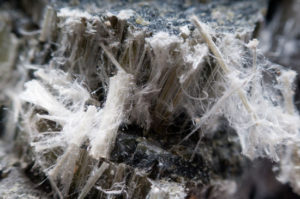
Amosite
Amosite asbestos is mostly found in South Africa. It is most often used for construction-related projects. This type of asbestos is usually brown with straight, short fibers. Many experts believe that amosite asbestos is more toxic than chrysotile.
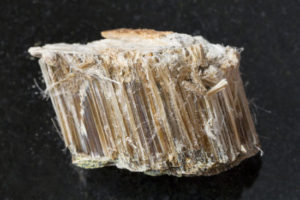
Anthophyllite
Anthophyllite asbestos is the rarest form of asbestos. It is mostly mined in Finland, although deposits of it have been mined in Georgia and North Carolina.

Actinolite
Actinolite asbestos is mostly used to make insulation. It is also found in paint and drywall. Actinolite asbestos fibers are dark-colored and straight.
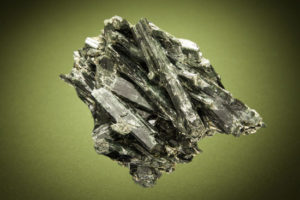
Tremolite
Tremolite asbestos is usually found near chrysotile asbestos. According to the U.S. Environmental Protection Agency (“EPA”), tremolite that contaminated a mine in Montana was used in attic insulation in approximately 35 million homes in America.
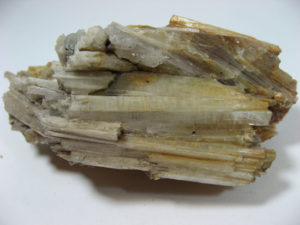
Crocidolite
Crocidolite asbestos does not offer as much resistance to heat as the other forms of asbestos. It is blue and has thin fibers that easily penetrate human tissue. Many experts consider this form of asbestos to be the most dangerous.
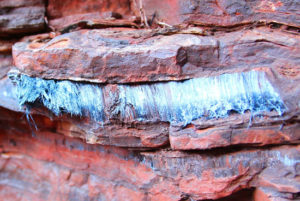
There is no safe level of exposure to asbestos. This position is shared by many United States government agencies, including:
- the Occupational Safety and Health Administration (“OSHA”), which has regulatory authority over workplaces,
- the Environmental Protection Agency (“EPA”), which has regulatory authority over non-occupational settings,
- the National Institute for Occupational Safety and Health (“NIOSH”), which is responsible for conducting research and making recommendations for the prevention of work-related injuries and illnesses,
- the World Trade Organization (“WTO”), and
- the national academies of science of every major industrialized nation.
In 2014, the World Health Organization (“WHO”) reviewed the existing literature and concluded that all fiber types are capable of causing asbestos-related disease, including mesothelioma, and reiterated the statement that there is no safe level for exposure to asbestos. Therefore, anyone who inhales asbestos fibers will be at risk of developing mesothelioma.
Asbestos-Containing Products
Asbestos is very heat-resistant and resilient. Therefore, manufacturers began using asbestos in building materials, insulation, gaskets and packing, clothing, and many items that cause friction, such as vehicle brakes, clutches, and many others. Since the late 1880s, thousands of products have been made with asbestos. These products included everyday products like coffee makers, ovens, and toasters.
In addition to raw asbestos fiber, asbestos-containing products include, but are not limited to, the following:
Transportation-related Products
- aerospace adhesives and epoxies
- body fillers
- brakes (brake pads and drums)
- clutch assemblies
- engine head gaskets
- engine mounts
- engine heat shields
- firewall seals and fabrics
- friction materials
- hood liners
- insulated engine shrouds
- molded brake blocks
- railroad electrical arc chutes
- turbines
Heat Insulating Materials and Products
- asbestos insulating board (“AIB”)
- asbestos paper
- asbestos sheet packing
- asbestos tape
- blaze shields
- canvas
- cloth (textile and yarn)
- fire blankets
- fire sleeves (hose protectors)
- fyrbestos sheets
- heat guards
- gloves
- insulating blankets
- insulating cement
- insulmastic
- lagging adhesive
- metal mesh blanket
- mineral wool
- mittens / mitts
- refractory cement
- refractory fiber felt
- rope & cord
- safety curtains (used in theaters)
- sponge blocks
- tank jackets
Plumbing and Piping Products
- gaskets
- valves
- pumps
- seals
- sealers (Navy sealers)
Construction Materials
- acoustical / acoustical panels
- acoustical plaster
- adhesive ducts and other materials
- asphalt
- cement
- cement pipe
- clapboards
- cork-containing board
- cork covering
- cork-containing mastic
- corrugated sheets
- drilling mud
- drilling additive
- electrical wires
- emulsion adhesive
- emulsions
- expansion joint
- flexible duct connectors
- flooring
- forms
- gunning mix
- honeycomb structures
- joint compound of the “dry mix” type
- lap siding boards
- micarta materials
- millboard
- panels
- patching fiber
- patching plaster
- permaboard
- phenolic laminates
- putty
- refractory castables
- shingles
- sleeves
- spackle
- spray
- stone sheathing
- talc powder
- tar paper
- tiles
- troweled coating
- tubing
- vermiculite compounds,
- wallpaper
- wallboard
- waterproofing materials
- welding rods
- wires
- wood fiber plaster
Industrial Equipment
- boiler wall coats
- furnaces
- furnace cement
- generators
- nuclear reactors
Consumer Products
- cigarette filters
- coffee makers
- hair dryers
- ironing board covers
- ovens
- talc powder
- toasters
- wicks (for candles, gas ranges and oil lamps)
Exposure to Asbestos Contaminated Talc
For decades asbestos fibers have been reported in cosmetic talcum powder. In 1935, asbestos was identified as a source of exposure in talc minters. By 1968, asbestos was described in consumer cosmetic talc products. By 1972, the cosmetic industry was looking for asbestos-free alternatives to cosmetic talc. Exposure to asbestos-containing talc has been shown to cause asbestos related diseases, including mesothelioma.
Other Asbestos-Caused Diseases
In addition to mesothelioma, the inhalation of asbestos fibers can cause asbestos lung cancer and asbestosis.
What Damages Can be Recovered in Mesothelioma Cases?
Mesothelioma victims can claim the following two main types of damages: Non-Economic and Economic damages. In some situations, those individuals who are suffering from mesothelioma may potentially seek Punitive Damages. For cases involving future care, the mesothelioma lawyer at Cherepinskiy Law Firm retains top expert physicians, life care planners, and economists to evaluate clients’ needs and present the best case on their behalf. A detailed discussion of the recoverable damages is included on the Personal Injury Damages page of this website.
If mesothelioma resulted in the death of a loved one, then compensation can be sought in a Wrongful Death action.
Take Action! Promptly Contact A Mesothelioma Attorney for a Free Consultation
Selecting the best mesothelioma lawyer to represent you in a case is an important decision. Because these cases present unique factual, medical, and legal issues, it is crucial to choose an experienced firm.
Cherepinskiy Law Firm, as the mesothelioma lawyer, will provide you with an experienced lawyer who:
- has real courtroom experience;
- will carefully and fully investigate and prepare your case;
- understands your emotional stress and will help you find support that you need; and
- knows the pressures you are facing and will help you with these challenges.
Adversaries know that this firm stands ready to go to trial, which leads to the most favorable results for clients.
If you believe mesothelioma caused your injuries or a loved one’s death, please call or fill out an electronic contact form today to request a free consultation. Cherepinskiy Law Firm, as the Los Angeles mesothelioma lawyer, will work day and night in a personal injury or a wrongful death case to obtain the most favorable result possible for you and your family. The firm has everything it takes – from knowledge and skills to resources – to fight with large corporate entities. Cherepinskiy Law Firm is ready to go to battle to achieve the maximum level of compensation.
Sources
1. https://medlineplus.gov/mesothelioma.html
2. https://www.cdc.gov/mmwr/volumes/66/wr/mm6608a3.htm
3. https://www.cancer.gov/about-cancer/causes-prevention/risk/substances/asbestos/asbestos-fact-sheet
4. https://www.cancer.org/cancer/cancer-causes/asbestos.html
5. https://www.epa.gov/asbestos/learn-about-asbestos
6. https://www.atsdr.cdc.gov/asbestos/health_effects_asbestos.html
7. https://www.pennmedicine.org/cancer/types-of-cancer/mesothelioma/asbestos-cancer/types-of-asbestos
8. http://www.who.int/ipcs/assessment/public_health/asbestos/en/
9. http://www.iom-world.org/services/asbestos-services/asbestos-guide/
10. https://www.va.gov/disability/eligibility/hazardous-materials-exposure/asbestos/







